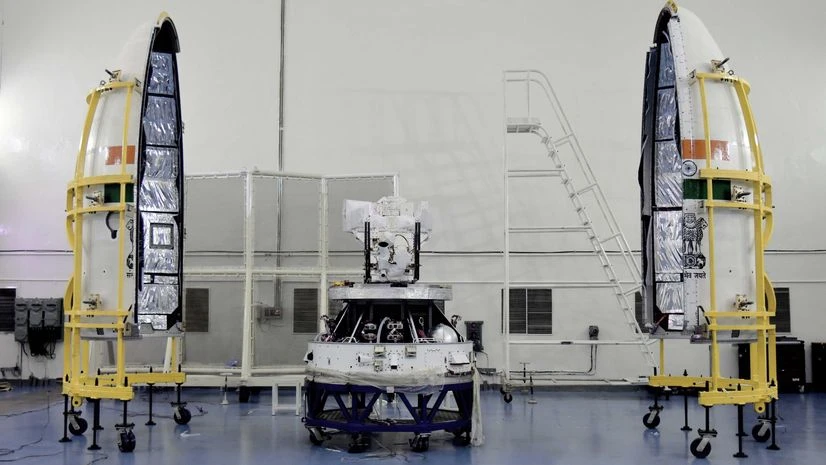)
SSLV-D3 EOS-08 Mission (Photo: Isro X )
The satellite will be launched aboard the third and final developmental flight of the Small Satellite Launch Vehicle (SSLV-D3) from the Satish Dhawan Space Centre in Sriharikota.
The primary mission of EOS-08 involves the design and development of a microsatellite, integrating new technologies necessary for future operational satellites, and ensuring that payload instruments are compatible with the microsatellite bus. The mission represents the culmination of the SSLV Development Project and paves the way for operational missions to be undertaken by Indian industry and NewSpace India Limited (NSIL).
Key details of EOS-08 and its payloads
Mass and power: The EOS-08 satellite has a mass of approximately 175.5 kg and is designed to generate 420 W of power, with a mission life of one year.
Payloads:
1. Electro Optical Infrared Payload (EOIR): This payload captures images in the Mid-Wave IR (MIR) and Long-Wave IR (LWIR) bands, both during the day and night. It supports applications such as satellite-based surveillance, disaster monitoring, environmental monitoring, fire detection, volcanic activity observation, and monitoring of industrial and power plant disasters.
2. Global Navigation Satellite System-Reflectometry Payload (GNSS-R): This payload is designed for remote sensing applications including ocean surface wind analysis, soil moisture assessment, cryosphere studies in the Himalayan region, flood detection, and inland waterbody monitoring.
3. SiC UV Dosimeter: This instrument monitors UV irradiance, particularly in the context of the Gaganyaan Mission, and serves as a high-dose alarm sensor for gamma radiation.
Tech improvements in Isro satellite
The EOS-08 satellite introduces significant advancements in satellite systems, particularly through the integrated avionics system, known as the communication, baseband, storage, and positioning (CBSP) package. This system combines multiple functions into a single unit, incorporating commercial off-the-shelf (COTS) components and evaluation boards, and supports up to 400 GB of data storage.
Additional technological innovations include a structural panel embedded with PCB, an embedded battery, a Micro-DGA (dual gimbal antenna), an M-PAA (Phased Array Antenna), and a flexible solar panel. These components are integral to onboard technology demonstrations, positioning EOS-08 as a significant milestone in Isro’s space missions.
Isro’s successful completion of the SSLV-D3/ EOS-08 mission will enable operational launches, bolstering India’s space capabilities and advancing its earth observation and remote sensing infrastructure.
First Published: Aug 13 2024 | 1:19 PM IST

































